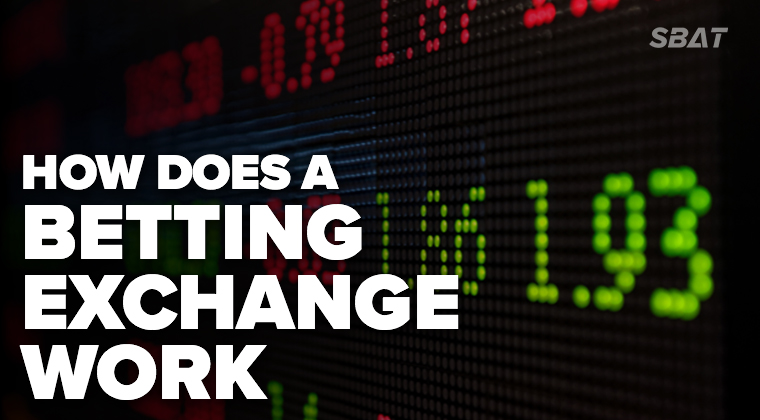
What is a betting exchange
A betting exchange is much different from your traditional method of betting. Instead of going up against the bookies, punters must compete against themselves in backing or laying a particular outcome of a sporting event. ‘Backing’ refers to believing that your chosen outcome will happen, whilst ‘laying’ an outcome means you do not believe it will happen. For example, in football, you can lay a team to win, meaning that for you to be successful the result will need to be either a draw or the opposition team must win the match.
How does and exchange work
In an exchange bet, the bookie plays no part, and the odds are determined by the punters themselves which can work for and against you in this scenario. Your bet only becomes active if an opposing punter takes the odds you have set and if the odds are poor or not worth the risk of taking the bet on, it’s unlikely anyone will back/lay the offer. It’s similar to trying to sell a particular item. If it’s worth £10, but you’re advertising it at £100, nobody will take it on.
This has become a growing component within betting over the past few years and has become extremely popular, especially amongst more experienced gamblers. Although it sounds confusing, it’s not too dissimilar from how the traditional form of betting against the bookies actually works. In any bet, there’s always a backer and a layer, in most cases you as the punter is the backer and the bookie is the layer, with the company offering you the odds on a particular outcome. Exchange works in the same way; the only difference is that there is more flexibility and room to manoeuvre within an exchange market.
In essence, the punter who offers the market takes on the role of the would-be bookie, by setting the odds and the backer’s stake for their chosen predicted outcome. For a visual representation, above we can see what placing an exchange bet looks like on the Betfair exchange site. This example is a lay bet, where the punter believes the Republic of Ireland will not defeat France 1-0 in their Euro 2016 match. They have offered any backer a price of 20/1 if they feel that it will happen, with a stake of £10 if they wish to take up their offer. On the Betfair Sportsbook, punters would receive odds of 14/1 for a 1-0 Ireland win, showing why people often look towards exchange if they want added value on a particular market. In exchange, if Ireland were to win 1-0 the backer would be entitled to £200, of which the layer would be liable to £190. However, if the scoreline is anything other than a 1-0 win for Ireland, the layer would make a neat £10 profit.
What exchanges are there?
These days you have a lot of choices in which exchange you pick. The largest and most popular is Betfair, they have been around for many years and cover more markets than any other exchange, and in most cases have more markets than most bookmakers. Betfair takes a 5% fee of any winning bets; this is how they earn their money by taking a commission. Smarkets is the next best compared to Betfair; they don’t offer as many markets, but it is a very user-friendly website and has good liquidity. After that you have Betdaq, Matchbook and Ladbrokes exchange (not to be confused with Ladbrokes), these are all smaller versions although matchbook is growing in popularity.